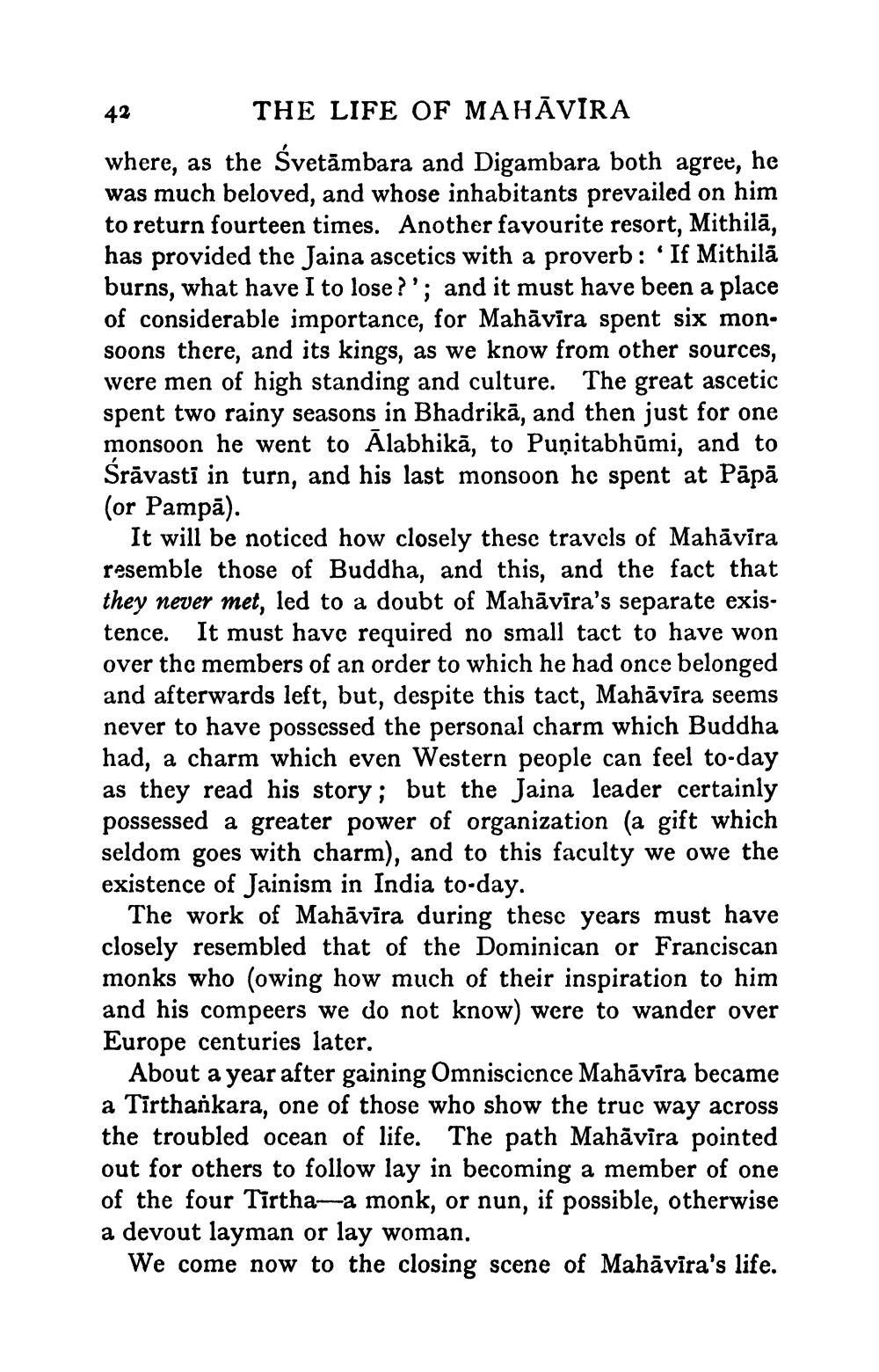________________
42
THE LIFE OF MAHAVIRA
where, as the Śvetāmbara and Digambara both agree, he was much beloved, and whose inhabitants prevailed on him to return fourteen times. Another favourite resort, Mithilā, has provided the Jaina ascetics with a proverb: 'If Mithila burns, what have I to lose?'; and it must have been a place of considerable importance, for Mahāvīra spent six monsoons there, and its kings, as we know from other sources, were men of high standing and culture. The great ascetic spent two rainy seasons in Bhadrikā, and then just for one monsoon he went to Ālabhikā, to Puņitabhūmi, and to Śrāvasti in turn, and his last monsoon he spent at Pāpā (or Pampā).
It will be noticed how closely these travels of Mahāvira resemble those of Buddha, and this, and the fact that they never met, led to a doubt of Mahāvīra's separate existence. It must have required no small tact to have won over the members of an order to which he had once belonged and afterwards left, but, despite this tact, Mahāvīra seems never to have possessed the personal charm which Buddha had, a charm which even Western people can feel to-day as they read his story; but the Jaina leader certainly possessed a greater power of organization (a gift which seldom goes with charm), and to this faculty we owe the existence of Jainism in India to-day.
The work of Mahāvīra during these years must have closely resembled that of the Dominican or Franciscan monks who (owing how much of their inspiration to him and his compeers we do not know) were to wander over Europe centuries later.
About a year after gaining Omniscience Mahāvīra became a Tirthankara, one of those who show the true way across the troubled ocean of life. The path Mahavira pointed out for others to follow lay in becoming a member of one of the four Tirtha-a monk, or nun, if possible, otherwise a devout layman or lay woman.
We come now to the closing scene of Mahāvīra's life.




